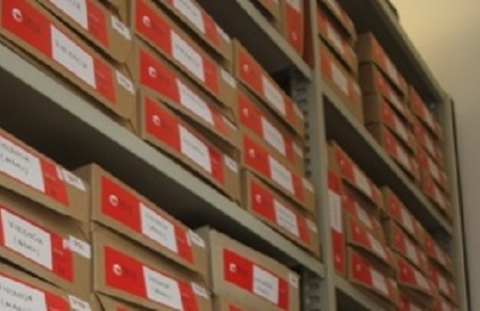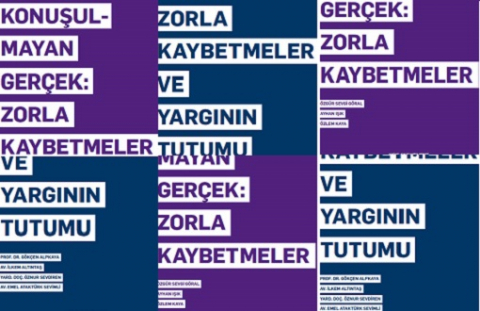
Upon its establishment in November 2011, Hafıza Merkezi started to work on enforced disappearances, or what is commonly known in Turkey as “disappearances under custody.” Based on discussions with victims and rights organizations, we defined the following as the needs concerning the situation of enforced disappearances.
- To document the crime of enforced disappearance in a standard and verified manner; to bring documentation to an appropriate state for research and wide public dissemination by gathering data at a centralized location; to reveal state terror and social destruction with these findings,
- To put an end to impunity related to the crime of enforced disappearance; to contribute to judicial decisions that will set precedents on subjects such as the statute of limitations and crimes against humanity, and to help the state take steps that will meet the expectations and needs of victims,
- To overcome social indifference and the lack of information among the public; to promote the “never again” approach by educating large segments of the public about the state terror of the past.
What did we do in 2012?
Documentation
Following preparation and research, we initiated fieldwork during the summer months of 2012 to understand the background of the policy of disappearance, its methods of application, the expectations of victims, and its social impact. Şırnak is a place that has been marked by state terror. Focusing on Şırnak as the first location for our fieldwork, we tried to understand how the policy of enforced disappearance is spatially informed and what the consequences of this crime against humanity are. Within the scope of this work, we conducted in-depth interviews with 93 persons, mostly in the districts of Cizre, Silopi, and İdil in Şırnak, as well as in Istanbul. Apart from the relatives of the disappeared, we also met with politicians, legalists, and rights advocates who have been witness to the policy of disappearance. In the next phase, we will continue to confirm the unverified information from our list of the disappeared by continuing to do work in the field.
We are preparing a report with reference to the data that have been collected. In the report, which we will release in April, we will focus on the background of the policy of disappearance, on how Şırnak was transformed into a space of death, on the strategies used by the state, and on how victims have responded.
We are preparing a report with reference to the data that have been collected. In the report, which we will release in April, we will focus on the background of the policy of disappearance, on how Şırnak was transformed into a space of death, on the strategies used by the state, and on how victims have responded. We are creating an archive of the visual, audio, and written records of the interviews we have conducted. This archive will be open to researchers. Additionally, we are in the process of building infrastructures to create an online database open to the public. We are comprehensively entering the events, perpetrators, victims, and legal information related to cases of enforced disappearance into an online database developed by Huridocs. We will open the database for use in the first months of 2013, first to rights organizations and then to the general public.
Legal Documentation and Litigation
We conducted legal documentation work in conjunction with the research from our meetings with the relatives of the disappeared. We gathered the legal documents related to disappeared persons and we met with lawyers interested in this subject. As of the end of 2012, we have collected legal data for a total of 202 disappeared persons. We are entering these data in the online database.
According to our first analyses based upon these data, it seems that in situations in which individual rights and freedoms clash with state policies, there is a process by which perpetrators were hidden and the events were publicly silenced. In April, we will publish a special report that includes a detailed analysis of our findings in the legal field.
According to our first analyses based upon these data, it seems that in situations in which individual rights and freedoms clash with state policies, there is a process by which perpetrators were hidden and the events were publicly silenced. In April, we will publish a special report that includes a detailed analysis of our findings in the legal field. The report will consist of four sections. The first section will provide a general framework of the policy of enforced disappearance from a legal and political perspective. The second section, which will focus on impunity and the statute of limitations, will examine the crime of disappearance from the perspective of legal methods and criminal law. The third section will contain an appraisal of cases of disappearance opened at the ECHR against Turkey as well as recommendations to lawyers who are bringing cases to the ECHR. In the last section, we will include an evaluation of the documents that we have gathered as well as further recommendations. Until now, there have been very few cases opened concerning the crime of enforced disappearance. For the past year, we have been following the case in Diyarbakır against the former JİTEM Commander Cemal Temizöz and the Chief Village Guard Kamil Atağ.[1] In addition, we also began to follow the case against the former Commanding Brigadier General of the Gendarme, Musa Çitil, who is alleged to be responsible for 13 disappearances. In the upcoming months, we are aiming to follow these cases further and to revive investigations that have become inactive.
Advocacy, Communication, and Civil Society Support
The past year was one during which we developed our website and used it actively. The website is now available in Kurdish in addition to Turkish and English. Over the course of the year, we shared news concerning our work and projects related to our field, especially on the topic of enforced disappearance. We are working to create a space for the sharing of international experiences, new developments in the field of enforced disappearances, and the center’s work. In the future, our website will be able to publish short videos and podcasts. In connection with our website, we also started to send a regular newsletter to rights advocates, academicians, and decision makers. We are sending one Turkish newsletter a month and one English newsletter every three months.
Based upon the findings we accumulated from our documentation efforts, we will initiate information and advocacy activities directed toward various segments of the public.
Working in coordination with rights advocates, academicians, and lawyers whom we contacted, we were able to develop ideas on how to explain cases of the crime of enforced disappearance to the public. Based upon the findings we accumulated from our documentation efforts, we will initiate information and advocacy activities directed toward various segments of the public. Among the activities we will conduct include art projects, youth work, and lobbying directed at decision makers. We attach importance to working together with civil society groups. Through small grants to YAKAY-DER, Göç-Der and TIHV, we aim to support these organizations’ own documentation efforts. We held meetings as a continuation of the “Civil Society Initiative for Truth Commissions” meetings that started in 2011. The İHD Diyarbakır Branch and TİHV presented their documentation experiences at meetings that we held. We will continue to hold these meetings in the upcoming year. In 2012, we also worked on a documentary film about the war from the perspective of primary school students in a village of Yüksekova in the 1990s. We aim to hold widespread screenings of the film, which was directed by Dilek Gökçin.
Memorialization Project with WPI
In the past year we started a project on memorialization with the World Policy Institute. For this project, we will help create a catalog of the spaces of memory and memorialization projects that have been undertaken in various places in Turkey by local governments and NGOs. The catalog will also be available on a website. As a continuation of the Monuments, Museums, and Memorial Initiatives Workshop we held in 2011, we will be organizing a meeting this upcoming February in Mardin. At this meeting, we will share and discuss practices of memorialization. People who have implemented good examples internationally as well as representatives of Turkey’s memorialization projects will be in attendance.
Regional Network with AHDA
Working in conjunction with the Alliance for Historical Dialogue and Accountability (AHDA), part of Columbia University’s Institute for the Study of Human Rights, we decided to work on establishing a regional network of institutions working on the subjects of historical dialogue and confronting the past. These efforts will accelerate this year.



